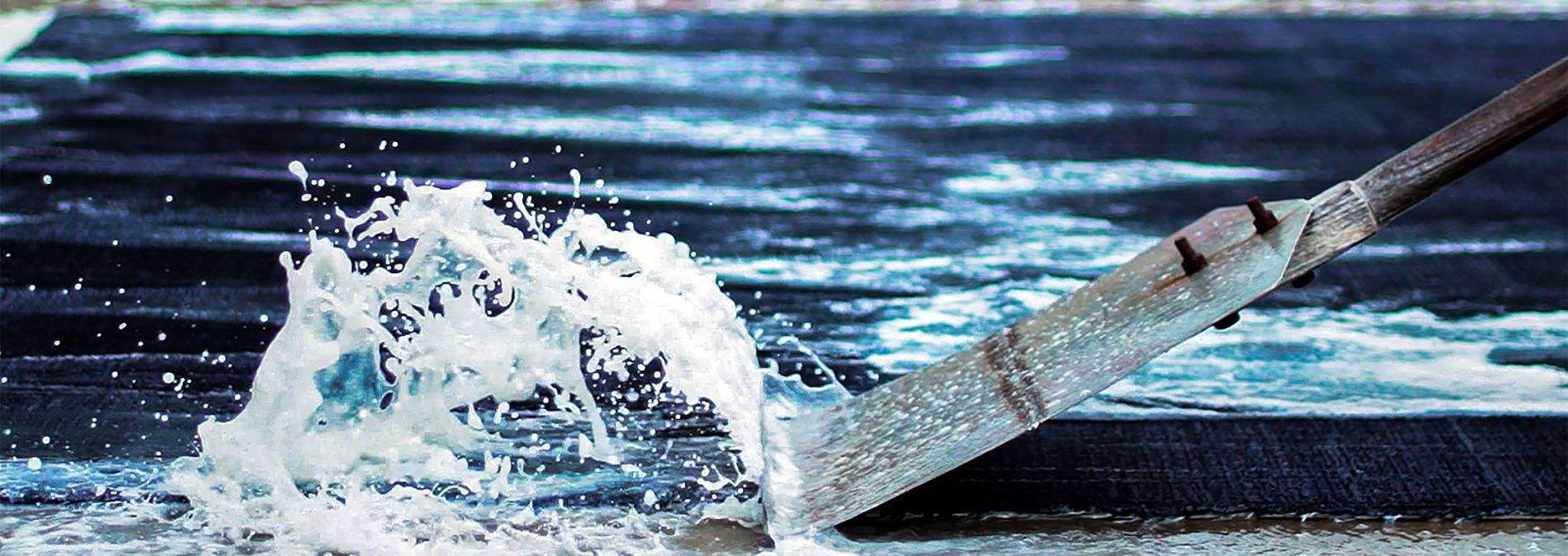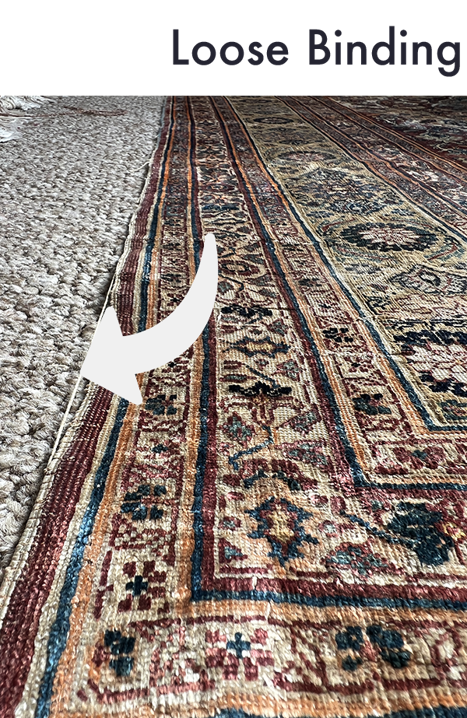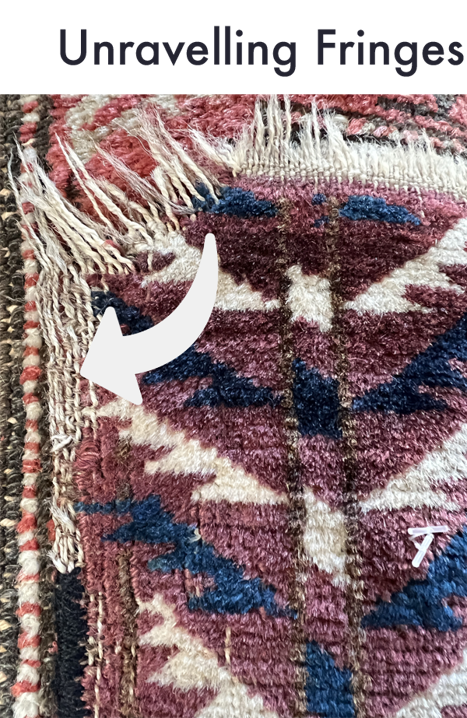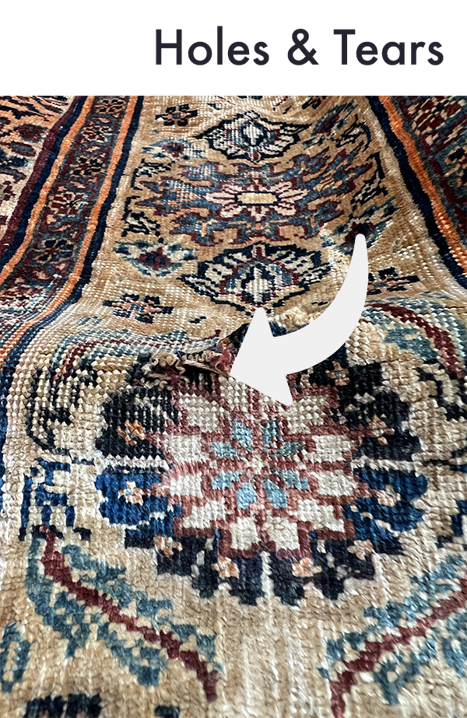Over time you will likely encounter the odd shoe or pawprint on your handmade rugs. A few marks here and there are bound to happen at some point, and in most cases, loose mud or light staining can be resolved with the right products and a little elbow grease.
How do I clean my handmade rug?
It's incredible how much longer a handmade rug can last with a little TLC every now and then. Simply vacuuming your rugs at least once a month keeps on top of any dust build-up, but remember, if your rug has fringes, it's best to turn off your vacuum's beater bar to avoid the fringes being sucked up and damaged.
How do I remove stains on a handmade rug?
Accidents happen all the time; in fact, we receive phone calls every day about pets "marking their territory" or crayons gone rogue on rugs.
In most cases, these spillages and stains can be removed with little or no impact on the rug, but the treatment required is dependent on the level of staining.
Light staining
Light staining includes minor soiling such as loose mud, flower residue and water-based spillages. These stains can be cleaned using an all-natural pure soap, free from bleach or other harmful substances. Just apply the soap with lukewarm water and dab the area with an undyed cloth. Avoid using a circular motion, which can disturb the weave and cause the wool ends to split. Once done, leave your rug to dry naturally.
Medium or heavy staining
Red wine spillages, pet excrement and even soot stains from open fireplaces. Medium to heavy staining covers those infuriating incidents we all dread. At the time, a horrifying stain on your beautiful rug can feel irreversible, but with a professional clean, even the toughest stains can be removed.
Professional Handmade Rug Cleaning
With a professional cleaning service, your rug undergoes a rigorous washing process handled by a team of professionals with over 45 years of experience cleaning and restoring handmade rugs. London House uses a unique combination of natural substances that removes even the most unforgiving stains, ensuring the wool keeps its integrity and original colour.
The decision to have your rug professionally cleaned doesn't always have to be instigated by a sudden stain or other damage.
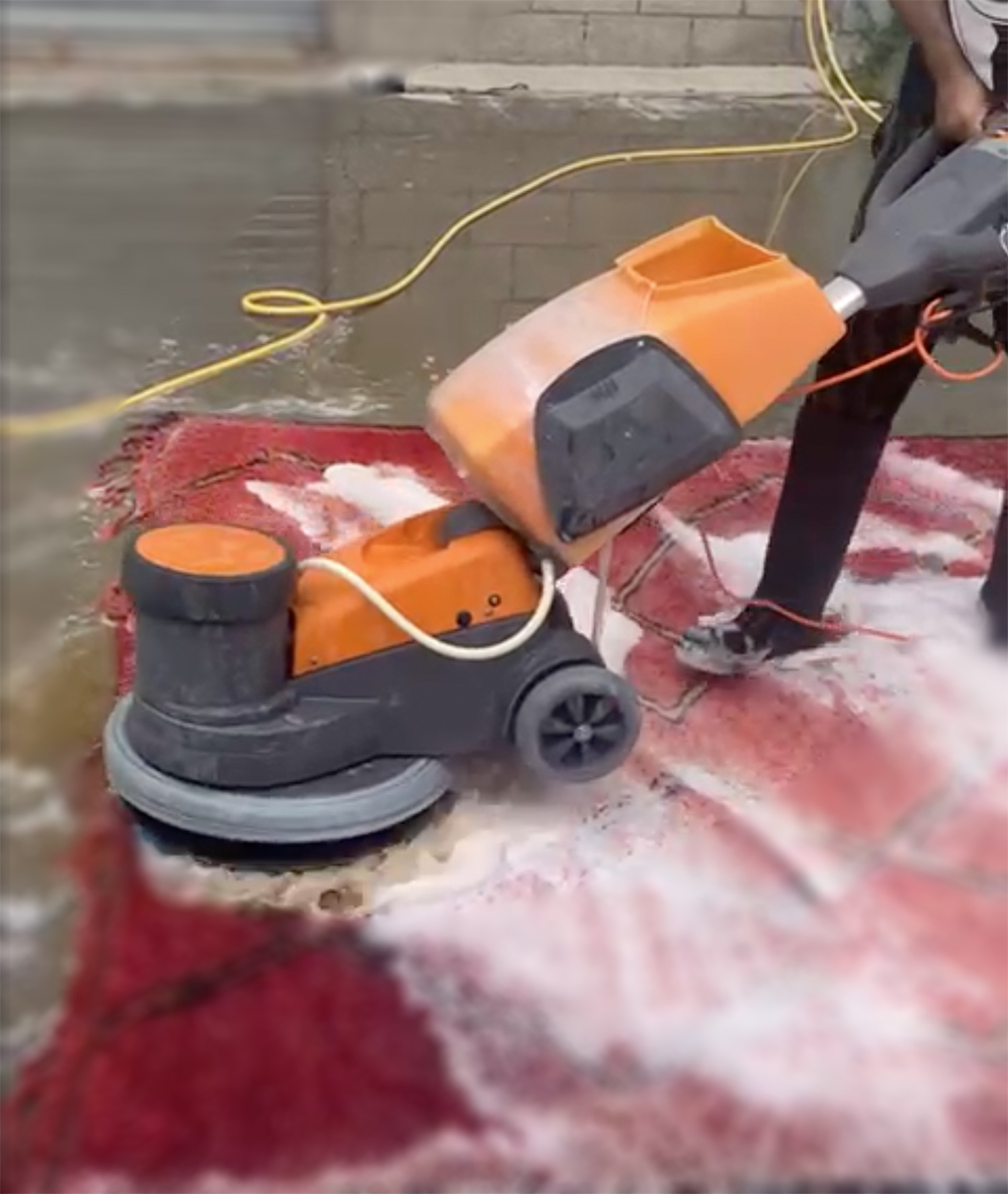
It's beneficial to have your rug cleaned every 3 to 7 years (size dependent) as this can also extend the life of your rug, improve air quality and reduce moth damage.
Over time, rugs with a thick pile can hold high levels of dust, and these dust particles are kicked up when walked on. As well as affecting air quality, this layer of dirt also attracts moths, and once moth larvae start chewing through your precious Persian pieces, they'll keep eating right through, exposing the warp and weft and even creating holes.
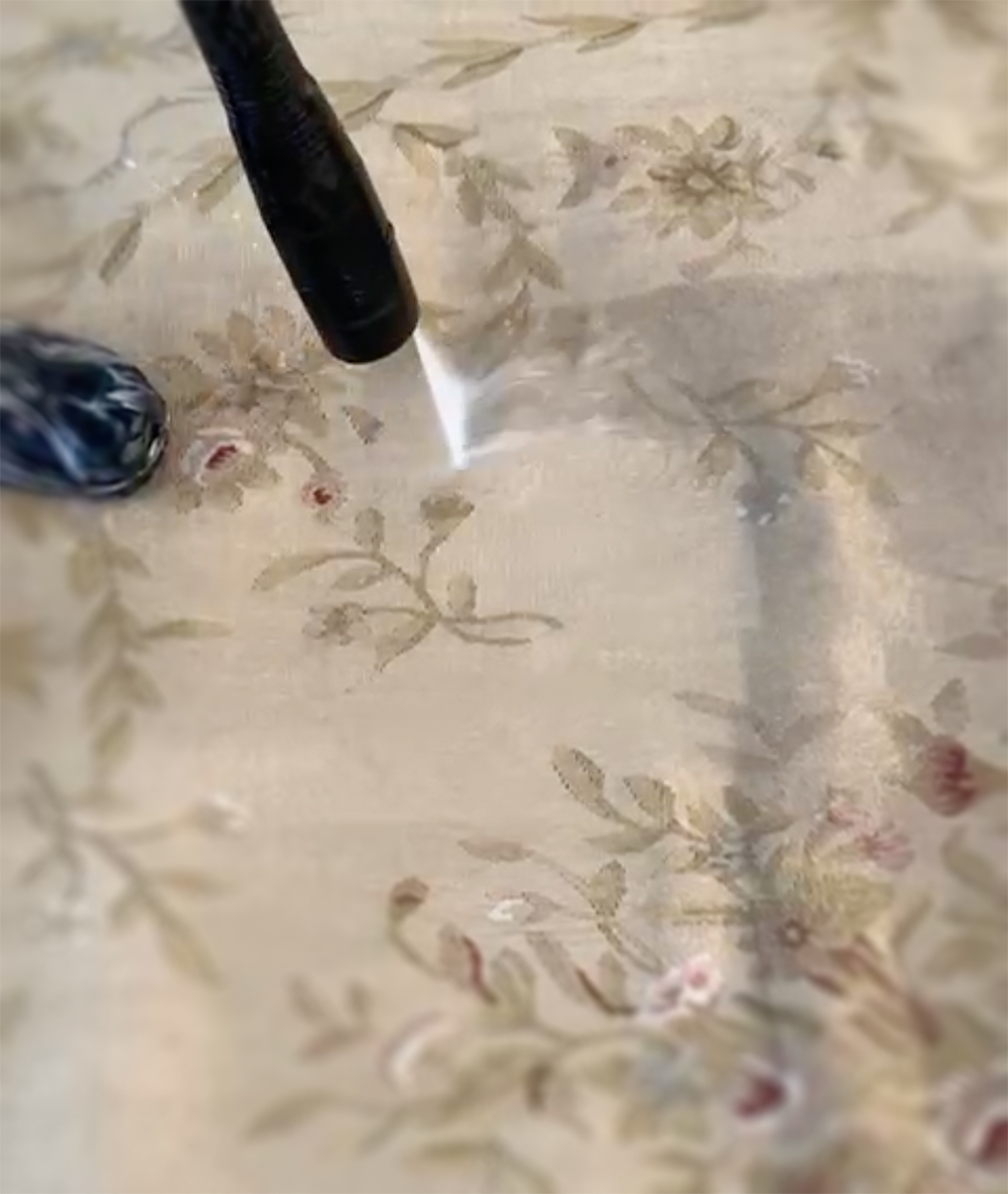
How to prevent moth damage on a handmade rug
As well as keeping your rug dust free, you can use a moth repellent spray to keep those nasty critters at bay. The safest way to protect rugs from infestation is by using solutions containing magnesium silicofluoride.
Neither moths, larvae, nor eggs are killed by it. Instead, it changes the taste of wool, making it less appetising. The solution should be sprayed thoroughly over the rug's front and back. There is no residual odour, no harmful chemicals, and it lasts up to three years (or until the rug is washed again).
If your rugs sit underneath any furniture, it's essential to check these rug sections, as dark, undisturbed areas are prone to moth damage.
Image courtesy of Bon Accord Pest Control
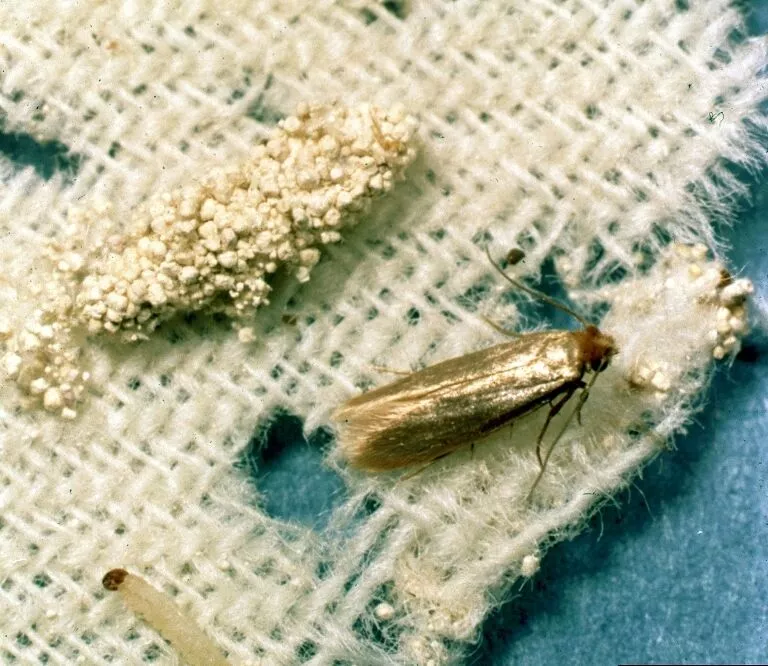
How to treat moth damage on a handmade rug
If you do discover early signs of moth damage, such as eggs or larvae, you'll need to clean the affected area immediately to reduce the risk of further damage. Simply use a hand brush to remove the pests, vacuum the area and use a natural moth-killing spray.
Should moths have already begun feasting on wool and other natural fibres in your rug, you'll notice patches of the rug are either missing or have holes. This tends to happen towards the edges of the rug near the fringes; however, moth damage has no limits and can destroy a whole rug in just a few months if left untreated.
Finding moth damage can be devastating as each handmade rug is unique and likely to have sentimental value as well as monetary value. If your rug has areas of moth damage, London House has a specialist rug restoration team who can restore it back to its former glory in most cases.
Handmade Rug Repair
Rugs are made to be walked on, so, understandably, being on the floor makes them vulnerable to wear, tear and bite marks! From dining chairs being scraped along the floor to dogs behaving badly, we hear a whole host of horror stories that end with rips, holes and other damage to beautifully handmade pieces.
Of all the rug repairs, the most common issue is damaged fringes. Those decorative tassels that flow so elegantly from each length of the rug are a vacuum cleaner's nightmare!
Fringes also become worn over time and generally require changing every 3 to 5 years, depending on how often the rug has been walked on. With this in mind, it's good to know what's involved when your fringes require a little attention.
Repairing Rug Fringes
Fringes come in many shapes and sizes, but whether they're twisted or knotted, chances are they're made of wool. When this wool becomes damaged, it's good to get ahead of things by having the ends stopped or replaced right away. Replacing the fringe requires the entire side of the fringe to be removed, replacing the whole thing, which keeps it consistent and stops further damage. Restorers prefer this method rather than just replacing the damaged section, as the latter would eventually result in the same problem arising.
Fringe stopping is a more cost-effective solution and removes the risk of further damage to the rug fringes. Stopping the ends means cutting the existing fringes right down to one consistent length and securing the fringe ends. In most cases, the fringes are cut down to around 2cm, but this is entirely dependent on the original fringe length.
If fringes are left to deteriorate further, the ends will eventually lead to the binding underneath detaching from the main pile of the rug and begin to impact the overall structure. Suppose the fringes have unravelled so much so that the binding has already come away, and the warp and weft are affected underneath. In that case, you'll likely need to have the rug base rewoven by a rug restoration specialist before replacing the fringe completely.
Hole Repair for Handmade Rugs
Another common problem is holes caused by hungry pets, small tears widening over time and, of course, moth bite. The good news is the majority of holes can be repaired by a highly skilled rug restoration professional. As you can imagine, this is a very delicate process with several intricate stages:
- Reweaving the base of the rug within the existing warp and weft
- Dying wool to match the original colours of the rug
- Hand-weaving the wool around the newly created warp and weft to match the rug's pattern.
The cost to carry out hole repairs on handmade rugs is generally upwards of £200 for small holes. Larger areas of damage require more rigorous restoration work that takes months to complete to ensure the repair is as seamless as possible. There is a more cost-effective solution which is to patch the rug with a similar coloured material; however, this only tends to work well on old kilim rugs.
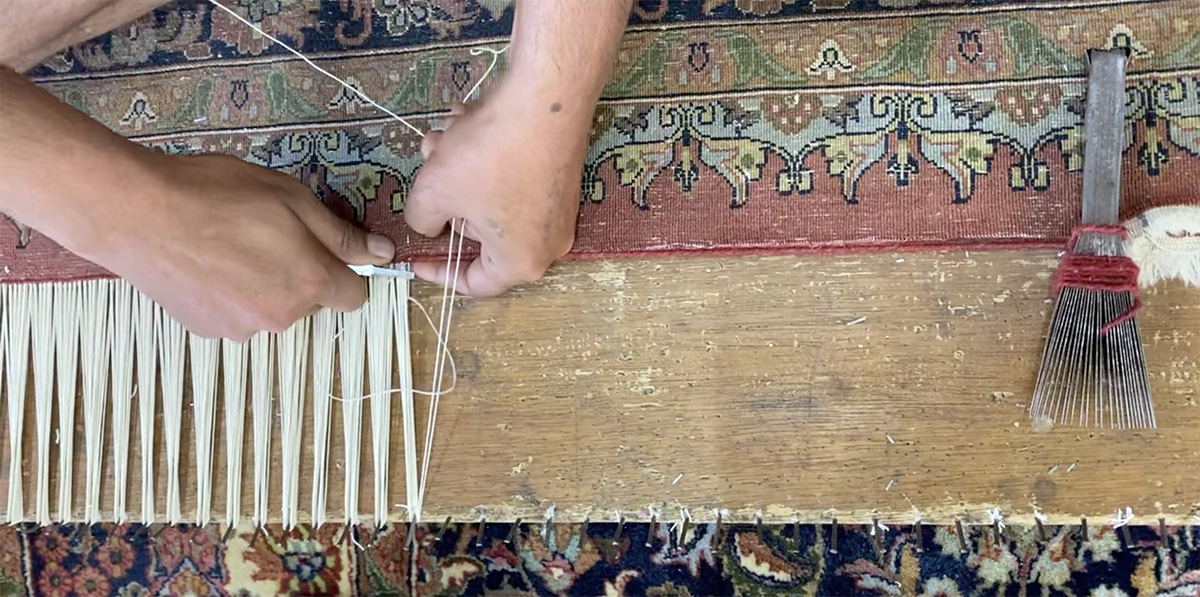
If your rug could do with freshening up, London House Rugs have a team of cleaning and restoration specialists who can clean any of your handmade pieces with a quick turnaround of just three weeks*
If you would like to learn more about rug cleaning and restoration, you can now get an estimate online, or feel free to contact one of the team, who will be more than happy to answer any questions you have.
